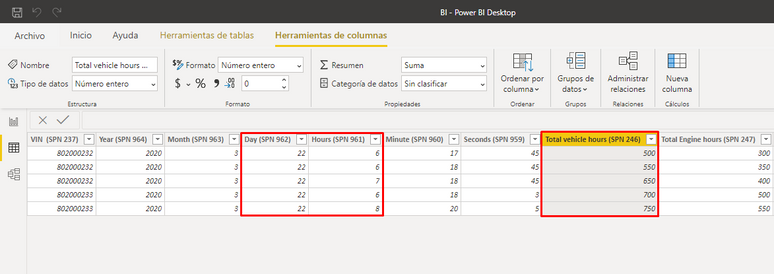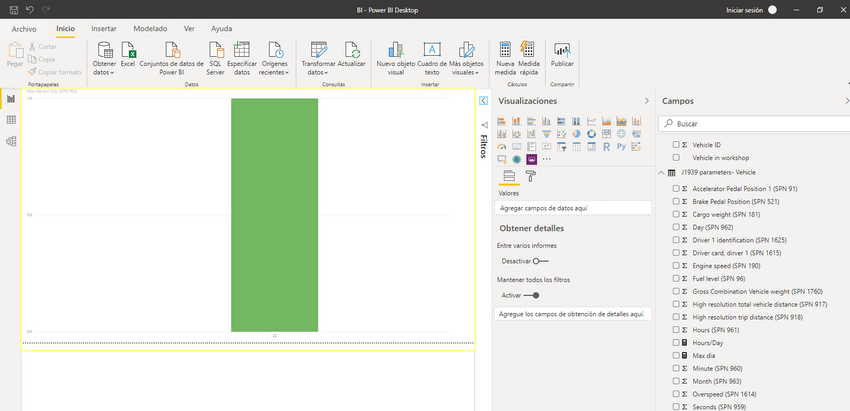- Power BI forums
- Updates
- News & Announcements
- Get Help with Power BI
- Desktop
- Service
- Report Server
- Power Query
- Mobile Apps
- Developer
- DAX Commands and Tips
- Custom Visuals Development Discussion
- Health and Life Sciences
- Power BI Spanish forums
- Translated Spanish Desktop
- Power Platform Integration - Better Together!
- Power Platform Integrations (Read-only)
- Power Platform and Dynamics 365 Integrations (Read-only)
- Training and Consulting
- Instructor Led Training
- Dashboard in a Day for Women, by Women
- Galleries
- Community Connections & How-To Videos
- COVID-19 Data Stories Gallery
- Themes Gallery
- Data Stories Gallery
- R Script Showcase
- Webinars and Video Gallery
- Quick Measures Gallery
- 2021 MSBizAppsSummit Gallery
- 2020 MSBizAppsSummit Gallery
- 2019 MSBizAppsSummit Gallery
- Events
- Ideas
- Custom Visuals Ideas
- Issues
- Issues
- Events
- Upcoming Events
- Community Blog
- Power BI Community Blog
- Custom Visuals Community Blog
- Community Support
- Community Accounts & Registration
- Using the Community
- Community Feedback
Register now to learn Fabric in free live sessions led by the best Microsoft experts. From Apr 16 to May 9, in English and Spanish.
- Power BI forums
- Forums
- Get Help with Power BI
- Desktop
- Get a messure for the last report of a day
- Subscribe to RSS Feed
- Mark Topic as New
- Mark Topic as Read
- Float this Topic for Current User
- Bookmark
- Subscribe
- Printer Friendly Page
- Mark as New
- Bookmark
- Subscribe
- Mute
- Subscribe to RSS Feed
- Permalink
- Report Inappropriate Content
Get a messure for the last report of a day
Good morning,
Im trying to get the value of a field, in this case "Total vehicle hours (SPN 246)" , of the last message of a day.
I mean for example as you can see:
In this case you can see that the data contains 5 rows, each row correspond to a message at a specific moment. The first one is for a vehicle with ID 802000232. The message is created with de following date: year 2020, month 3, day 22 and hour 6 and minutos 17 and seconds 45. So each lines is the status of the vehicle at that time.
What i want is to know the value of the field "Total vehicle hours (SPN 246)" for the last record of a day and vehicle.
In this case for vehicle 802000232 the last total vehicle hours for day 22 at month 3 will be 650.
The goal with this is to be able to define a messure tha is going to respresent the total vehicles hour per day (and vehicle) to be able to compare de productivity of the different vehicles
Thank you
Solved! Go to Solution.
- Mark as New
- Bookmark
- Subscribe
- Mute
- Subscribe to RSS Feed
- Permalink
- Report Inappropriate Content
Hi @Anonymous ,
You can refer to the sample .pbix
Best Regards,
Liang
If this post helps, then please consider Accept it as the solution to help the other members find it more quickly.
- Mark as New
- Bookmark
- Subscribe
- Mute
- Subscribe to RSS Feed
- Permalink
- Report Inappropriate Content
Hi @Anonymous ,
Try this:
Create a calculated column for the transaction timestamp. Something like:
Date Time =
DATE ( Data[Year], Data[Day], Data[Day] )
+ TIME ( Data[Hour], Data[Minute], Data[Second] )
Create another calculated column to determine whether a timestamp is the max for the day and return the total vehicle hours.
Last Vehicle Hours =
VAR __MAX_TIMESTAMP =
CALCULATE (
MAX ( Data[Date Time] ),
ALLEXCEPT ( Data, Data[Year], Data[Month], Data[Day] )
)
RETURN
IF ( Data[Date Time] = __MAX_TIMESTAMP, Data[Vehicle Hours] )
You can use this calculated column in a measure.
Did I answer your question? Mark my post as a solution!
Proud to be a Super User!
"Tell me and I’ll forget; show me and I may remember; involve me and I’ll understand."
Need Power BI consultation, get in touch with me on LinkedIn or hire me on UpWork.
Learn with me on YouTube @DAXJutsu or follow my page on Facebook @DAXJutsuPBI.
- Mark as New
- Bookmark
- Subscribe
- Mute
- Subscribe to RSS Feed
- Permalink
- Report Inappropriate Content
Hi @Anonymous ,
You could try to create the following measure and apply it to the visual level filter.
Measure =
IF (
MAX ( 'table'[Total vehicle hours] )
= CALCULATE (
MAX ( 'table'[Total vehicle hours] ),
ALLEXCEPT ( 'table', 'table'[VIN], 'table'[Year], 'table'[Month], 'table'[Day] )
),
1
)
Best Regards,
Liang
If this post helps, then please consider Accept it as the solution to help the other members find it more quickly.
- Mark as New
- Bookmark
- Subscribe
- Mute
- Subscribe to RSS Feed
- Permalink
- Report Inappropriate Content
Thank you for answering!!
I tried the way you said but the messure is returning a '1' instead of the value of the 'Total vehicle hours' field for the last record of the day.
- Mark as New
- Bookmark
- Subscribe
- Mute
- Subscribe to RSS Feed
- Permalink
- Report Inappropriate Content
Hi @Anonymous ,
Please apply it to the visual level filter.
Best Regards,
Liang
If this post helps, then please consider Accept it as the solution to help the other members find it more quickly.
- Mark as New
- Bookmark
- Subscribe
- Mute
- Subscribe to RSS Feed
- Permalink
- Report Inappropriate Content
Thank you for answering!
Im not sure if i understand what you mean by "Please apply it to the visual level filter".
In the visualitation, filters i have choosen the new messure created.
- Mark as New
- Bookmark
- Subscribe
- Mute
- Subscribe to RSS Feed
- Permalink
- Report Inappropriate Content
Hi @Anonymous ,
You can refer to the sample .pbix
Best Regards,
Liang
If this post helps, then please consider Accept it as the solution to help the other members find it more quickly.
- Mark as New
- Bookmark
- Subscribe
- Mute
- Subscribe to RSS Feed
- Permalink
- Report Inappropriate Content
Hi @Anonymous
I would try the following:
1. In that table, create two new columns and call them FullDate and FullTime. You can use the built-in DAX functions DATE() and TIME() and both those functions will ask for Year,Month,Day & Hours,Minutes,Seconds respectively.
2. You can then create the following measure:
Helpful resources

Microsoft Fabric Learn Together
Covering the world! 9:00-10:30 AM Sydney, 4:00-5:30 PM CET (Paris/Berlin), 7:00-8:30 PM Mexico City

Power BI Monthly Update - April 2024
Check out the April 2024 Power BI update to learn about new features.

| User | Count |
|---|---|
| 105 | |
| 105 | |
| 88 | |
| 73 | |
| 66 |
| User | Count |
|---|---|
| 122 | |
| 112 | |
| 98 | |
| 79 | |
| 72 |






